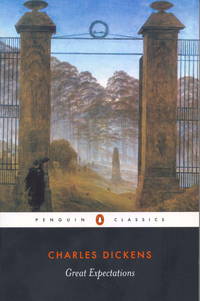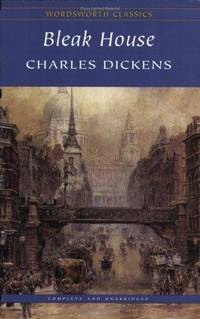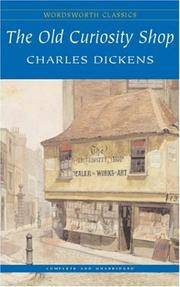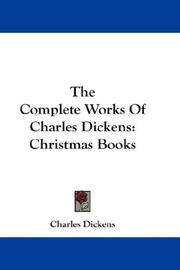During his lifetime, Dickens was viewed as a popular entertainer of fecund imagination, while later critics championed his mastery of prose, his endless invention of memorable characters, and his powerful social sensibilities. The popularity of his novels and short stories during his lifetime and to the present is demonstrated by the fact that none have ever gone out of print. Dickens played a major role in popularizing the serialized novel. He is remembered by many as the greatest writer of his time. He is frequently referred to by his last name only, even on the first reference (à la Shakespeare).
Dickens was born in Portsmouth, Hampshire to John Dickens, a naval pay clerk, and his wife Elizabeth Dickens. When he was five, the family moved to Chatham, Kent. When he was ten, the family relocated to Camden Town in London. His early years were an idyllic time. He thought of himself then as a "very small and not-over-particularly-taken-care-of boy". He spent his time outdoors, reading voraciously with a particular fondness for the picaresque novels of Tobias Smollett and Henry Fielding. He talked later in life of his extremely strong memories of childhood and his continuing photographic memory of people and events that helped bring his fiction to life. His family was moderately well-off, and he received some education at a private school but all that changed when his father, after spending too much money entertaining and retaining his social position, was imprisoned for debt. At the age of twelve, Dickens was deemed old enough to work and began working for ten hours a day in Warren's boot-blacking factory, located near the present Charing Cross railway station. He spent his time pasting labels on the jars of thick polish and earned six shillings a week. With this money, he had to pay for his lodging and help to support his family, who were incarcerated in the nearby Marshalsea debtors' prison.
After a few years, his family's financial situation improved, partly due to money inherited from his father's family. His family was able to leave the Marshalsea, but his mother did not immediately remove him from the boot-blacking factory, which was owned by a relation of hers. Dickens never forgave his mother for this and resentment of his situation and the conditions under which working-class people lived became major themes of his
Works. Dickens told his biographer John Forster, "No advice, no counsel, no encouragement, no consolation, no support from anyone that I can call to mind, so help me God!" In May 1827, Dickens began work as a law clerk, a junior office position with the potential to become a lawyer. He did not like the law as a profession and after a short time as a court stenographer, he became a journalist, reporting parliamentary debate and traveling Britain by stagecoach to cover election campaigns. His journalism formed his first collection of pieces
The Pickwick Papers.
On 2 April 1836, he married Catherine Hogarth, with whom he was to have ten children and set up a home in Bloomsbury.
His ten children by Catherine Thompson Hogarth were:
* Charles Culliford Boz Dickens (6 January 1837–1896).
* Mary Angela Dickens (6 March 1838–1896).
* Kate Macready Dickens (29 October 1839–1929).
* Walter Landor Dickens (8 February 1841–1861).
* Francis Jeffrey Dickens (15 January 1844–1886).
* Alfred D'Orsay Tennyson Dickens (28 October 1845–1912).
* Sydney Smith Haldimand Dickens (18 April 1847–1872).
* Henry Fielding Dickens (15 January 1849–1933).
* Dora Annie Dickens (16 August 1850–April 1851).
* Edward Bulwer Lytton Dickens (13 March 1852– 1902).
In the same year, he accepted the job of editor of
Bentley's Miscellany, a position he would hold until 1839 when he fell out with the owner. Two other journals in which Dickens would be a major contributor were
Household Words and
All the Year Round. In 1842, he traveled together with his wife to the United States; the trip is described in the short travelogue
Martin Chuzzlewit. Dickens' writings were extremely popular in their day and were read extensively. In 1856, his popularity allowed him to buy Gad's Hill Place. This large house in Higham, Kent was very special to the author as he had walked past it as a child and had dreamed of living in it. The area was also the scene of some of the events of Shakespeare's Henry IV, part 1 and this literary connection pleased Dickens.
Dickens separated from his wife in 1858. In Victorian times, divorce was almost unthinkable, particularly for someone as famous as he was. He continued to maintain her in a house for the next twenty years until she died. Although they were initially happy together, Catherine did not seem to share quite the same boundless energy for life which Dickens had. Her job of looking after their ten children and the pressure of living with and keeping house for a world-famous novelist certainly did not help. Catherine's sister Georgina moved in to help her, but there were rumors that Charles was romantically linked to his sister-in-law. An indication of his marital dissatisfaction was when, in 1855, he went to meet his first love, Maria Beadnell. Maria was by this time married as well, but she seemed to have fallen short of Dickens's romantic memory of her.
On the 9th June 1865, while returning from France to see Ellen Ternan, Dickens was involved in the Staplehurst rail crash in which the first six carriages of the train plunged off of a bridge that was being repaired. The only first-class carriage to remain on the track was the one in which Dickens was berthed. Dickens spent some time tending the wounded and the dying before rescuers arrived. Before finally leaving, he remembered the unfinished manuscript for
Our Mutual Friend, and he returned to his carriage to retrieve it.
Dickens managed to avoid an appearance at the inquiry into the crash, as it would have become known that he was traveling that day with Ellen Ternan and her mother, which could have caused a scandal. Ellen, an actress, had been Dickens' companion since the break-up of his marriage, and, as he had met her in 1857, she was most likely the ultimate reason for that break-up. She continued to be his companion, and likely mistress, until his death.
Although unharmed, he never really recovered from the crash, which is most evident in the fact that his normally prolific writing shrank to completing
Nicholas Nickleby. The traveling shows were extremely popular, and on December 2, 1867, Dickens gave his first public reading in the United States at a New York City theatre. The effort and passion he put into these readings with individual character voices are also thought to have contributed to his death.
Five years to the day after the Staplehurst crash, on 9 June 1870, he died after suffering a stroke. Contrary to his wish to be buried in Rochester Cathedral, he was buried in the Poets’ Corner of Westminster Abbey. The inscription on his tomb reads: "He was a sympathizer to the poor, the suffering, and the oppressed; and by his death, one of England's greatest writers is lost to the world."
His popularity has waned little since his death and he is still one of the best known and most-read English authors. At least 180 movies and TV adaptations based on Dickens' works help confirm his success. Many of his works were adapted for the stage during his own lifetime and as early as 1913 a silent film of The Pickwick Papers was made. His characters were often so memorable that they took on a life of their own outside his books. Gamp became a slang expression for an umbrella from the character Mrs. Gamp, and Pickwickian, Pecksniffian, and Gradgrind all entered dictionaries due to Dickens' original portraits of such characters who were quixotic, hypocritical, or emotionlessly logical. Sam Weller, the carefree and irreverent valet of The Pickwick Papers was an early superstar, perhaps better known than his author at first. It is likely that
A Christmas Carol is his best-known story, with new adaptations almost every year. It is also the most-filmed of Dickens's stories, many versions dating from the early years of cinema. This simple morality tale with both pathos and its theme of redemption, for many, sums up the true meaning of Christmas and eclipses all other Yuletide stories in not only popularity but in adding archetypal figures (Scrooge, Tiny Tim, the Christmas ghosts) to the Western cultural consciousness.
At a time when Britain was the major economic and political power of the world, Dickens highlighted the life of the forgotten poor and disadvantaged at the heart of the empire. Through his journalism, he campaigned on specific issues — such as sanitation and the workhouse — but his fiction was probably all the more powerful in changing public opinion in regard to class inequalities. He often depicted the exploitation and repression of the poor and condemned the public officials and institutions that allowed such abuses to exist. His most strident indictment of this condition is in Our Mutual Friend, 1865) underscoring not only his almost preternatural ability to create compelling storylines and unforgettable characters but also ensuring that the Victorian public confronted issues of social justice that had commonly been ignored.
His fiction, with often vivid descriptions of life in nineteenth-century England, has inaccurately and anachronistically come to globally symbolize Victorian society (1837-1901) as uniformly "Dickensian," when in fact, his novels' time span is from the 1780s to the 1860s. In the decade following his death in 1870, a more intense degree of socially and philosophically pessimistic perspectives invested British fiction; such themes were in contrast to the religious faith that ultimately held together even the bleakest of Dickens's novels. Later Victorian novelists such as Thomas Hardy and George Gissing were influenced by Dickens but their works display a lack or absence of religious belief and portray characters caught up by social forces (primarily via lower-class conditions) that steer them to tragic ends beyond their control. Samuel Butler (1835-1902), most notably in The Way of All Flesh (1885; publ. 1903), also questioned religious faith but in a more upper-class milieu.
Novelists continue to be influenced by his books; for example, such disparate current writers as Anne Rice and Tom Wolfe evidence direct Dickensian connections. Ultimately, Dickens stands today as a brilliant, innovative, and sometimes flawed novelist whose stories and characters have become not only literary archetypes but also part of the public imagination.




































